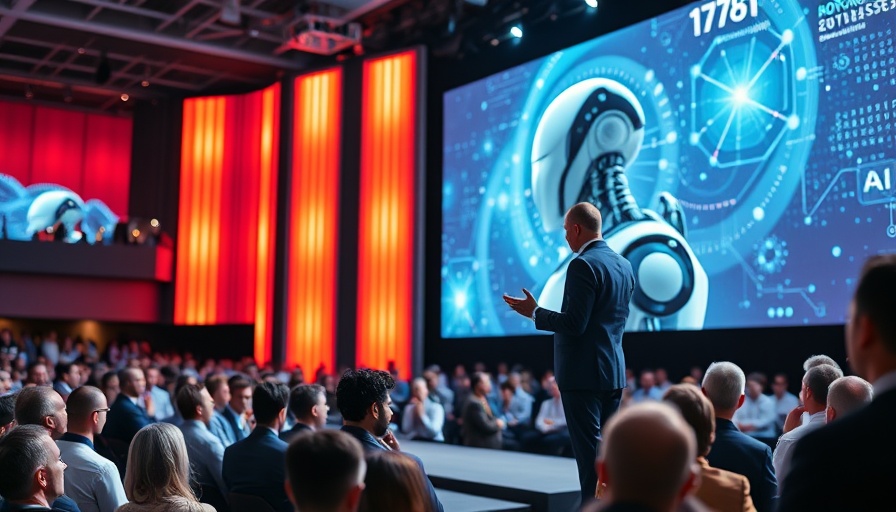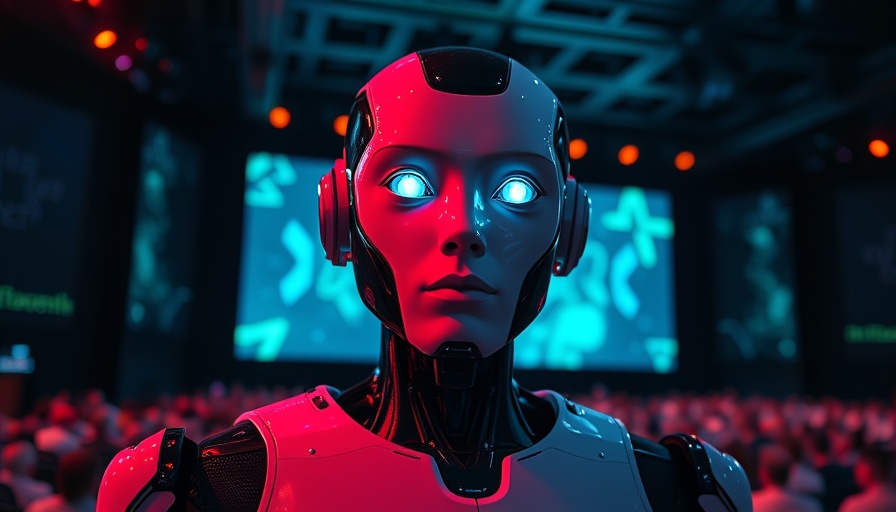
A New Era for AI: The Shift from Size to Intelligence
In the fast-evolving landscape of artificial intelligence, the recent unveiling of two innovative models, A3B from Brigham Young University (BYU) and K2 Think from the Mohamed bin Zayed University of Artificial Intelligence (MBZUAI), has catalyzed a significant paradigm shift. These models are not just technologically advanced; they signify a departure from the traditional belief that larger models yield better results. Instead, they highlight a nuanced approach to training and deployment, prioritizing efficiency and contextual understanding, especially relevant for Michigan innovation hubs.
In 'New Chinese AI Model Destroys DeepSeek: 100X More Powerful', the discussion dives into transformative AI models A3B and K2 Think, exploring key insights that sparked deeper analysis on our end.
A3B: Redefining Reasoning with Efficiency
The A3B model’s distinctive architecture is designed to optimize resource utilization while maintaining high performance. With a parameter count totaling 21 billion, yet only 3 billion active per token, this model’s architecture enables it to manage computational costs adeptly. The dedicated router determines which expert parameters to activate, ensuring that only necessary tasks are powered up. This approach allows for diversity in activation and efficient learning—a game-changer for tech founders in Michigan looking to integrate cost-effective AI solutions.
Training Techniques Amplifying Performance
Key to A3B’s success is its multifaceted training methodology. The structured training pipeline employs a progressive reinforcement learning strategy focused on logical reasoning, math, and programming skills. It capitalizes on modern techniques like unified preference optimization to foster a stable alignment. This method directly influences the model's capability to handle challenging reasoning tasks, making it ideal for enterprises seeking robust AI applications in software development.
K2 Think: Dense Architecture Bridging Gaps
On the other hand, MBZUAI's K2 Think introduces a dense architecture asserting a 32 billion parameter framework. This model shines through its meticulous training pipeline, leveraging supervised fine-tuning and verifiable reinforcement learning to create a well-rounded inference process. The step-by-step approach not only enhances mathematical reasoning but fosters a cleaner response generation process—a crucial factor for Metro Detroit app development industries that prioritize reliable outputs.
Capabilities That Support Industry Needs
Both A3B and K2 Think boast exemplary performance metrics in reasoning tasks, positioning them as effective tools for practitioners in the fields of data analytics and software development. Their open-access nature allows for widespread experimentation and customization, appealing to Michigan venture funding initiatives that back innovative technology projects. This accessibility also fosters collaboration within Metro Detroit incubators, inspiring the next generation of AI solutions.
The Future of AI in Michigan: Opportunities and Challenges
As we delve into the implications of these breakthroughs, it's essential to recognize both the opportunities and challenges they present. Models like A3B and K2 Think usher in a future where AI fosters efficient workflows and sophisticated decision-making across various sectors, including Michigan cybersecurity and Detroit cloud computing. However, the underlying need for a skilled workforce proficient in machine learning and robotics highlights a pressing issue: the demand for educational programs and training initiatives to bolster the local tech ecosystem.
Why This Matters to You
For tech professionals and founders in Michigan, understanding these advancements is crucial for leveraging AI effectively within their enterprises. Whether it's integrating new AI solutions into existing workflows or innovating ways to utilize these models for enhanced product development, being informed about these tools can significantly influence your approach to automation and digital transformation.
Models such as A3B and K2 Think exemplify the shift toward more strategic and context-aware AI, crucial for adapting to dynamic market demands. As Michigan continues to cultivate its status as a beacon for technology and innovation, these advances provide a roadmap towards transformative growth and sustainability in the digital economy.
To stay at the forefront of these developments and understand how they can be adopted within your initiatives, consider engaging with local tech events and networking opportunities that focus on emerging technologies and AI applications.
 Add Row
Add Row  Add
Add 



Write A Comment